Click on images to enlarge
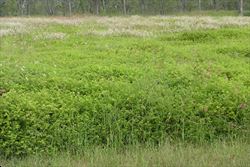
dense infestation (Photo: Chris Gardiner)
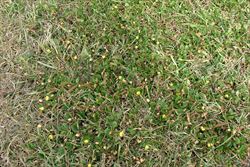
creeping habit growing in a lawn (Photo: Sheldon Navie)
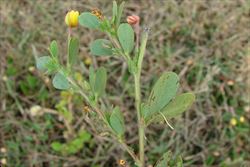
stems and leaf undersides (Photo: Sheldon Navie)
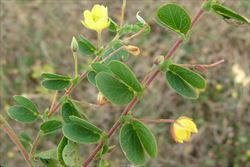
flowers and leaves (Photo: Sheldon Navie)
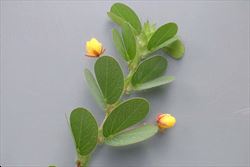
flower buds and leaves with two leaflets (Photo: Chris Gardiner)
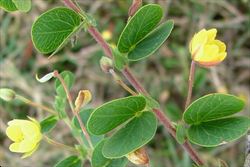
close-up of flowers and leaves (Photo: Sheldon Navie)
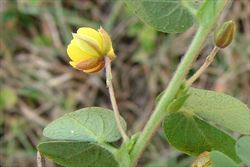
close-up of flower from below (Photo: Sheldon Navie)

immature and mature fruit (Photo: Sheldon Navie)
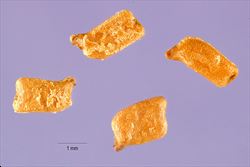
close-up of seeds (Photo: Tracey Slotta at USDA PLANTS Database)
Scientific Name
Chamaecrista rotundifolia (Pers.) Greene var. rotundifolia
Synonyms
Cassia rotundifolia Pers.
Family
Caesalpiniaceae (Queensland, the ACT, Victoria, Tasmania, Western Australia and the Northern Territory)Fabaceae: sub-family Caesalpinioideae (New South Wales)Leguminosae (South Australia)
Common Names
round-leaf cassia, roundleaf sensitive pea, Wynn cassia
Origin
Native to Mexico, Central America (i.e. Costa Rica and Panama), the Caribbean (i.e. Cuba, Jamaica and Puerto Rico) and tropical South America (i.e. Venezuela, Brazil, eastern Bolivia, Colombia, northern Argentina, Paraguay and Uruguay).
Naturalised Distribution
Widely naturalised in the coastal and sub-coastal regions of northern and eastern Australia. Its current range extends from the coastal districts of northern New South Wales, through south-eastern, central and northern Queensland, the coastal districts of the Northern Territory to a few locations in northern Western Australia. Also naturalised on Norfolk Island and on Lord Howe Island.
Naturalised overseas in western Africa and south-eastern USA (i.e. Florida).
Notes
This species was introduced into Australia as a pasture herb and has become naturalised in pastures, open woodlands and disturbed sites, as well as in riparian forests and on sand dunes. Round-leaf cassia (Chamaecrista rotundifolia var. rotundifolia) is currently of most concern in south-eastern Queensland, where it was recently ranked among the 200 most invasive plant species.

